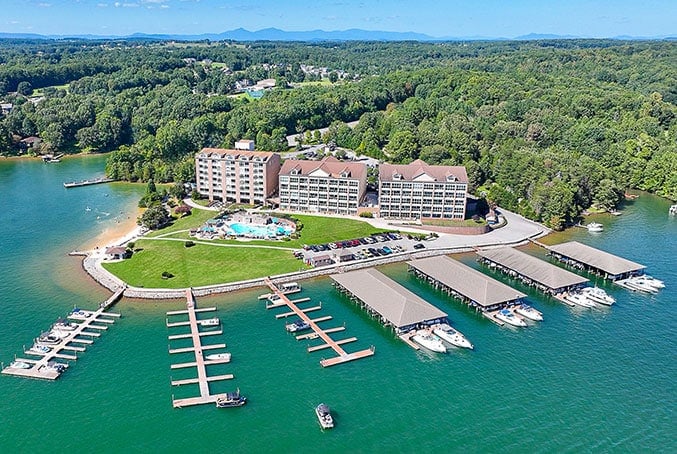Orchestrated Appalachia’s biggest conservation effort in years for family heritage
Any mountain lover can appreciate the value of the pristine Rocky Fork Tract—10,000 unspoiled Appalachian acres wedged between the Cherokee and Pisgah National Forests of Tennessee and North Carolina. But for David Ramsey roots run deeper in Rock Fork. A little over a year ago the land—located just 30 miles in opposite directions from both Asheville and Johnson City—was the largest privately owned, unprotected tract on the East Coast. Because of its prime location, it was on the radar of regional developers. But in December 2008, after a rigorous conservation campaign, it was purchased by a coalition of environmental groups for $40 million. For Ramsey, the victory capped 13 years of hard work to save the land that’s a part of his family heritage.
 Ramsey has long been known in Eastern Tennessee for his love of the outdoors. When he’s not working at Mahoney’s Outfitter in downtown Johnson City, he’s leading hikes and snapping photos of scenic gems like the Roan Highlands. He grew up visiting relatives in the small community of Rocky Fork, where family on his father’s side goes back five generations. In fact, he was the first Ramsey son to be born in a hospital. His father was born in an old mountain home in Rocky Fork.
Ramsey has long been known in Eastern Tennessee for his love of the outdoors. When he’s not working at Mahoney’s Outfitter in downtown Johnson City, he’s leading hikes and snapping photos of scenic gems like the Roan Highlands. He grew up visiting relatives in the small community of Rocky Fork, where family on his father’s side goes back five generations. In fact, he was the first Ramsey son to be born in a hospital. His father was born in an old mountain home in Rocky Fork.
“I grew up visiting my relatives up there among some old mountain families,” Ramsey recalls. “There’s a tiny graveyard that overlooks Rock Fork Creek, and I still visit the original headstone of my great-great-great grandfather.”
Although privately owned, Rocky Fork—which cradles a key stretch of the Appalachian Trail—has been managed by the Tennessee Wildlife Resources Agency and open to the public for the past 50 years. Therefore, it has become a special place to a wide variety of outdoor enthusiasts, who revere the tract for its breathtaking vistas, rugged backcountry, and, most importantly to conservationists, an extremely diverse wildlife habitat. In addition to peregrine falcons, rare salamanders, wild turkeys, and bobcats, Rocky Fork has the largest concentration of black bears outside Great Smoky Mountains National Park. It also holds one of the last remaining natural habitats of native Appalachian brook trout.
Since the late 90s Ramsey had been a part of the movement to get Rocky Fork permanently transferred to the state or the Forest Service, but deals always fell through. Then four years ago he picked up a local newspaper. The front headline read, “Is Rocky Fork the next Wolf Laurel?” An accompanying article went on to say developers and Unicoi County business people were talking about turning the tract into a giant gated community.
 “I remember getting a chill right down my spine,” Ramsey says. “I decided I had to do everything in my power to rekindle the effort, so I jumped in with both feet.”
“I remember getting a chill right down my spine,” Ramsey says. “I decided I had to do everything in my power to rekindle the effort, so I jumped in with both feet.”
While environmental groups like the Conservation Fund and Southern Appalachian Highlands Conservancy raised funds and negotiated the purchase, Ramsey waged a vigorous ground effort—devoting most of his free time to Rocky Fork. Armed with facts about the tract’s critical habitats, as well as the historical, scenic, and recreation values, he gave weekly presentations to any civic group that would listen. He also took government officials on hikes in the area to expose its beauty and importance. Despite all of his work in orchestrating one of the most important land-saving efforts in Appalachia, he is reluctant to take credit, humbly insisting he was just a piece of a larger puzzle.
“I stood in the offices of our representatives and senators shoulder to shoulder with hunters, trout fishermen, mountain bikers, and hikers,” he says. “We all found common ground in wanting to see this land saved. It really was an amazing collaboration between groups that are sometimes adversarial.
 “But I do have a sense of accomplishment, because I put my heart and soul into this. I am proud that I kept this issue out in front of the public and created local support for it. That’s been my role—making people realize what we would have lost if we didn’t get this land protection.”
“But I do have a sense of accomplishment, because I put my heart and soul into this. I am proud that I kept this issue out in front of the public and created local support for it. That’s been my role—making people realize what we would have lost if we didn’t get this land protection.”
Around half of the Rocky Fork’s 10,000 acres have been transferred to the Forest Service and are now a part of the Cherokee National Forest. The goal is to get the remaining 5,000 acres in the hands of the Forest Service or the state of Tennessee.
Ramsey would like people to visit the area—explore Rocky Fork and take a hike or a mountain bike ride. After they visit, contact Tennessee Senators Lamar Alexander and Bob Corker to express support for completing the public protection of the tract.
“The land is now in the right hands,” he says. “But we still have work to do.” •







